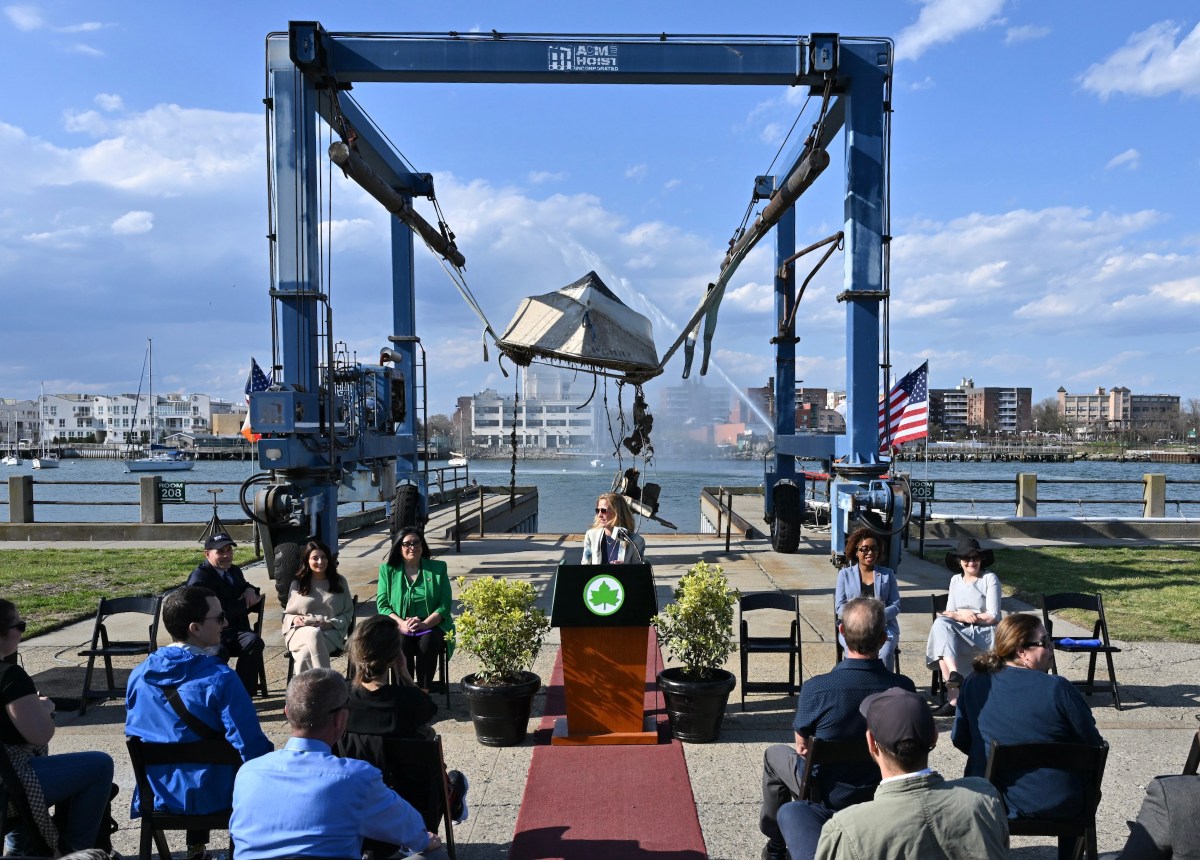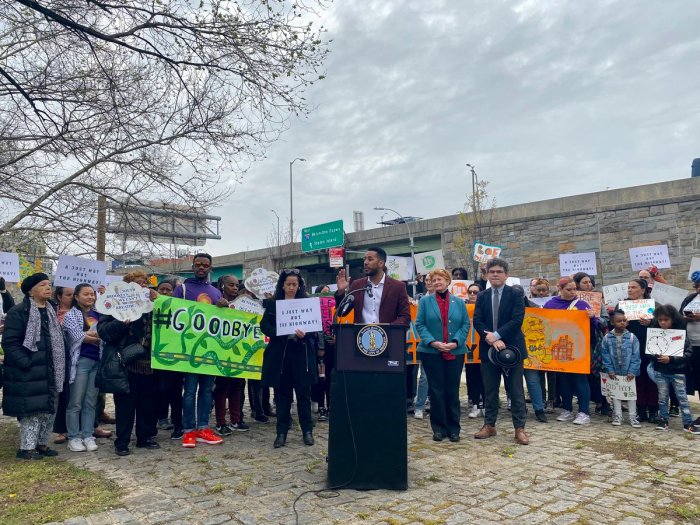It is a streetcar named quagmire.
A trolley along the Brooklyn waterfront would be a $2.5-billion gift to developers, likely providing a sluggish service that few straphangers will actually use, warns a public transit advocate who was also a top political honcho in Portland, Ore. when a similar service was taking off there.
“Most streetcar projects in the U.S. provide slow, unreliable service that does not serve many people,” said David Bragdon, who served as president of the area’s regional Metro Council from 2003 to 2010, and now heads Transit Center, a foundation that funds and advocates for public transit projects in New York. “We don’t want New York City to repeat the mistakes of other places and spend $2.5 billion if the result is not useful transportation for riders.”
In the days since Mayor DeBlasio announced his plan to construct a streetcar from Sunset Park to Queens, pols and media commentators have repeatedly cited the West Coast hipster enclaves’ tram service — the first modern-day streetcar system in the country when it launched in 2001 — as a model of success.
But Bragdon says the Stumptown cable car — which claims to cart around 15,000 people every day, though its operators have been caught dramatically inflating ridership figures in the past — is regarded by locals as sluggish and erratic, as are many others across the country that have followed in its tracks.
“I lived right on the streetcar line, across the street from a stop, but I rarely rode it because I could walk most places faster,” said Bragdon, who first moved across the country to work for the Bloomberg administration.
DeBlasio claims his so-called Brooklyn-Queens Connector would shuttle 24,500 straphangers along the waterfront every week day — compared to the 125,000 who ride the G train every day. Around 30,000 commuters currently ride waterfront bus services, but those all hook up to Manhattan-bound subway stops — many of which are struggling with rush-hour overcrowding — while the mayor’s vague route appears to connect with only a few, Transit Center said in a recent blog post slamming the idea.
One thing the Portland service has done well is help spur development along its tracks, Bragdon says. The line runs through several formerly industrial areas that developers were turning into Dumbo-esque condo districts when it launched.
But those same developers also made direct financial contributions to the project, he said, unlike the funding model DeBlasio is pitching, which rests on the assumption that property values will rise along proposed 16-mile line — even though construction and house prices in Red Hook, the Navy Yard, and Greenpoint are already booming.
“Developers in Portland truly did contribute a significant share of the capital cost, not through theoretical tax appreciation, as is talked about here, but through firm commitments,” he said.
But that doesn’t mean allowing developers and businesses to bankroll public transportation is a good idea, says one of Bragdon’s colleagues. Too many of the country’s streetcar projects have been created by politicians and the real-estate industry with the goal of making money, rather than getting people around, and the Brooklyn-Queens Connector — which is being pushed by developer Two Trees and other business interests along the proposed route — would be no different, he said.
“Developers, like our friends here behind the Brooklyn-Queens streetcar, feel the need for some transportation in places where it may not be that strong,” said Jon Orcutt, a spokesman for Transit Center and a former policy director at the city’s Department of Transportation. “They want something visible to sell the area, but they don’t know anything about transportation.”


















